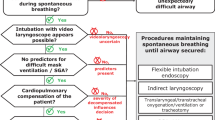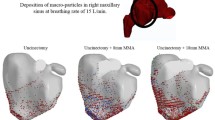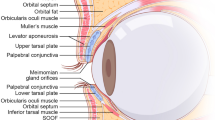Abstract
High-flow nasal oxygen (HFNO) has been used in “tubeless” shared-airway surgeries but whether HFNO increased the fire hazard is yet to be examined. We used a physical model for simulation to explore fire safety through a series of ignition trials. An HFNO device was attached to a 3D-printed nose with nostrils connected to a degutted raw chicken. The HFNO device was set at twenty combinations of different oxygen concentration and gas flow rate. An electrocautery and diode laser were applied separately to a fat cube in the cavity of the chicken. Ten 30 s trials of continuous energy source application were conducted. An additional trial of continuous energy application was conducted if no ignition was observed for all the ten trials. A total of eight short flashes were observed in one hundred electrocautery tests; however, no continuous fire was observed among them. There were thirty-six events of ignition in one hundred trials with laser, twelve of which turned into violent self-sustained fires. The factors found to be related to a significantly increased chance of ignition included laser application, lower gas flow, and higher FiO2. The native tissue and smoke can ignite and turn into violent self-sustained fires under HFNO and continuous laser strikes, even in the absence of combustible materials. The results suggest that airway surgeries must be performed safely with HFNO if only a short intermittent laser is used in low FiO2.





Similar content being viewed by others
Data availability
The data that supports the findings of this study are available within the article.
References
Fisher M. Prevention of surgical fires: a certification course for healthcare providers. AANA J. 2015;83:271–4.
Mehta SP, Bhananker SM, Posner KL, Domino KB. Operating room fires: a closed claims analysis. Anesthesiology. 2013;118:1133–9. https://doi.org/10.1097/ALN.0b013e31828afa7b.
Rinder CS. Fire safety in the operating room. Curr Opin Anaesthesiol. 2008;21:790–5. https://doi.org/10.1097/ACO.0b013e328318693a.
Adams TR, Ricciardelli A. Airway fire during awake tracheostomy using high-flow nasal oxygen. Anaesth Rep. 2020;8:25–7. https://doi.org/10.1002/anr3.12038.
Onwochei D, El-Boghdadly K, Oakley R, Ahmad I. Intra-oral ignition of monopolar diathermy during transnasal humidified rapid-insufflation ventilatory exchange (THRIVE). Anaesthesia. 2017;72:781–3. https://doi.org/10.1111/anae.13873.
Stuermer KJ, Ayachi S, Gostian AO, Beutner D, Huttenbrink KB. Hazard of CO2 laser-induced airway fire in laryngeal surgery: experimental data of contributing factors. Eur Arch Otorhinolaryngol. 2013;270:2701–7. https://doi.org/10.1007/s00405-013-2521-1.
Santos P, Ayuso A, Luis M, Martinez G, Sala X. Airway ignition during CO2 laser laryngeal surgery and high frequency jet ventilation. Eur J Anaesthesiol. 2000;17:204–7. https://doi.org/10.1046/j.1365-2346.2000.00619.x.
Gustafsson IM, Lodenius Å, Tunelli J, Ullman J, Jonsson Fagerlund M. Apnoeic oxygenation in adults under general anaesthesia using transnasal humidified rapid-insufflation ventilatory exchange (THRIVE). Br J Anaesth. 2017;118:610–7. https://doi.org/10.1093/bja/aex036.
Patel A, Nouraei SA. Transnasal Humidified Rapid-Insufflation Ventilatory Exchange (THRIVE): a physical method of increasing apnoea time in patients with difficult airways. Anaesthesia. 2015;70:323–9. https://doi.org/10.1111/anae.12923.
Huang L, Athanasiadis T, Woods C, Dharmawardana N, Ooi EH. The use of transnasal humidified rapid insufflation ventilatory exchange in laryngeal and pharyngeal surgery: flinders case series. J Otolaryngol Soc Aust. 2019;2:17–17. https://doi.org/10.21037/ajo.2019.05.02.
Lau J, Loizou P, Riffat F, Stokan M, Palme CE. The use of THRIVE in otolaryngology: our experiences in two Australian tertiary facilities. J Otolaryngol Soc Aust. 2019;2:22. https://doi.org/10.21037/ajo.2019.07.02.
Huang L, Dharmawardana N, Badenoch A, Ooi EH. A review of the use of transnasal humidified rapid insufflation ventilatory exchange for patients undergoing surgery in the shared airway setting. J Anesth. 2020;34:134–43. https://doi.org/10.1007/s00540-019-02697-3.
Tam K, Jeffery C, Sung CK. Surgical management of supraglottic stenosis using intubationless optiflow. Ann Otol Rhinol Laryngol. 2017;126:669–72.
Srivastava R, Agarwal AC, Agarwal S, Pathak M. High flow nasal cannula: a game changer in airway surgery. Indian J Otolaryngol Head Neck Surg. 2019;71:299–303. https://doi.org/10.1007/s12070-019-01717-8.
Patrick W. THRIVE and airway fires. Anaesthesia. 2017;72:1035. https://doi.org/10.1111/anae.13993.
Roy S, Smith LP. What does it take to start an oropharyngeal fire? Oxygen requirements to start fires in the operating room. Int J Pediatr Otorhinolaryngol. 2011;75:227–30. https://doi.org/10.1016/j.ijporl.2010.11.005.
Roy S, Smith LP. Surgical fires in laser laryngeal surgery: are we safe enough? Otolaryngol Head Neck Surg. 2015;152:67–72. https://doi.org/10.1177/0194599814555853.
Roy S, Smith LP. Prevention of airway fires: testing the safety of endotracheal tubes and surgical devices in a 201 model. Am J Otolaryngol. 2015;36:63–6. https://doi.org/10.1016/j.otc.2018.08.011.
Smith LP, Roy S. Operating room fires in otolaryngology: risk factors and prevention. Am J Otolaryngol. 2011;32:109–14. https://doi.org/10.1016/j.otc.2018.08.011.
VanCleave AM, Jones JE, McGlothlin JD, Saxen MA, Sanders BJ, Walker LA. Factors involved in dental surgery fires: a review of the literature. Anesth Prog. 2014;61:21–5. https://doi.org/10.2344/0003-3006-61.1.21.
Roy S, Smith LP. Device-related risk of fire in oropharyngeal surgery: a mechanical model. Am J Otolaryngol. 2010;31:356–9. https://doi.org/10.1016/j.amjoto.2009.05.006.
Christensen AM. Experiments in the combustibility of the human body. J Forensic Sci. 2002;47:466–70.
Qin J, Chow WK. Experimental data on water mist suppression. Procedia Eng. 2013;62:868–77. https://doi.org/10.1016/j.proeng.2013.08.137.
Awtry AR, Fleming JW, Ebert V. Simultaneous diode-laser-based in situ measurement of liquid water content and oxygen mole fraction in dense water mist environments. Opt Lett. 2006;31:900–2. https://doi.org/10.1364/OL.31.000900.
VanCleave AM, Jones JE, McGlothlin JD, Saxen MA, Sanders BJ, Vinson LA. The effect of intraoral suction on oxygen-enriched surgical environments: a mechanism for reducing the risk of surgical fires. Anesth Prog. 2014;61:155–61. https://doi.org/10.2344/0003-3006-61.4.155.
Arroyo HH, Neri L, Fussuma CY, Imamura R. Diode laser for laryngeal surgery: a systematic review. Int Arch Otorhinolaryngol. 2016;20:172–9. https://doi.org/10.1055/s-0036-1579741.
Havel M, Sroka R, Englert E, Stelter K, Leunig A, Betz CS. Intraindividual comparison of 1,470 nm diode laser versus carbon dioxide laser for tonsillotomy: a prospective, randomized, double blind, controlled feasibility trial. Lasers Surg Med. 2012;44:558–63. https://doi.org/10.1002/lsm.22053.
Merigo E, Clini F, Fornaini C, et al. Laser-assisted surgery with different wavelengths: a preliminary ex vivo study on thermal increase and histological evaluation. Lasers Med Sci. 2013;28:497–504. https://doi.org/10.1007/s10103-012-1081-8.
Acknowledgements
The authors acknowledge the funding supplied by the Taipei Veterans General Hospital. The authors also want to thank the Fire Experiment Center, Architecture and Building Research Institute, Ministry of the Interior, ROC (Taiwan), for technical support.
Funding
This research is sponsored by Taipei Veterans General Hospital, Taiwan, R.O.C. under Project No. V109B-019.
Author information
Authors and Affiliations
Contributions
MYC: This author helped with designing and conducting the experiment, data acquisition, and drafting and revising the manuscript. JHC: This author helped with designing and conducting the experiment, data acquisition, and drafting and revising the manuscript. SPL: This author helped with the statistical analysis and manuscript revision. WNT: This author helped with the statistical analysis and manuscript revision. SWL: This author helped with the statistical analysis and manuscript revision. CKT: This author helped with revising the manuscript. MYT: This author helped with designing the experiment and revising the manuscript. HHKC: This author helped with drafting and revising the manuscript. FWS: This author helped with designing and conducting the experiment, funding acquisition, and drafting and revising the manuscript.
Corresponding author
Ethics declarations
Conflict of interest
The authors declare no conflicts of interest related to the subject matter or materials discussed in this article.
Ethical approval
The department of medical research of Taipei Veterans General Hospital has confirmed that no ethical approval is required.
Additional information
Publisher's Note
Springer Nature remains neutral with regard to jurisdictional claims in published maps and institutional affiliations.
Rights and permissions
About this article
Cite this article
Chang, MY., Chen, JH., Lin, SP. et al. Fire safety study on high-flow nasal oxygen in shared-airway surgeries with diathermy and laser: simulation based on a physical model. J Clin Monit Comput 36, 649–655 (2022). https://doi.org/10.1007/s10877-021-00690-4
Received:
Accepted:
Published:
Issue Date:
DOI: https://doi.org/10.1007/s10877-021-00690-4




